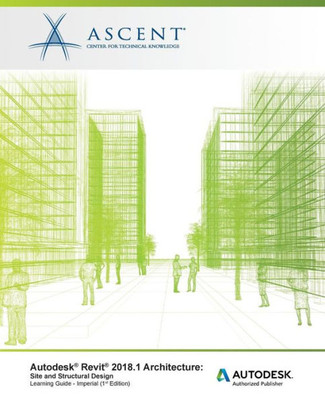The main purpose of the Autodesk(R) Revit(R) Architecture software is to design buildings: walls, doors, floors, roofs, and stairs. However, architects also frequently need to add site and structural information. The Autodesk(R) Revit(R) 2018.1 Architecture: Site and Structural Design learning guide covers the elements and tools that are used to create topographic surfaces for site work and add structural elements. Topics Covered Create topographic surfaces Add property lines and building pads Modify toposurfaces with subregions, splitting surfaces and grading the regions Annotate site plans and add site components Work with Shared Coordinates Create structural grids and add columns Add foundation walls and footings Add beams and beam systems Create framing elevations and add braces Prerequisites Students who purchase this learning guide should be comfortable with the fundamentals of the Autodesk Revit Architecture software as taught in the Autodesk(R) Revit(R) Architecture Fundamentals learning guide and have knowledge of basic techniques taught in this guide. Information on the Autodesk(R) Revit(R) Structure software, which is optimized for structural engineering, is covered in a separate learning guide.
- | Author: ASCENT - Center for Technical Knowledge
- | Publisher: ASCENT, Center for Technical Knowledge
- | Publication Date: Nov 16, 2017
- | Number of Pages: 114 pages
- | Language: English
- | Binding: Paperback
- | ISBN-10: 1946571474
- | ISBN-13: 9781946571472






